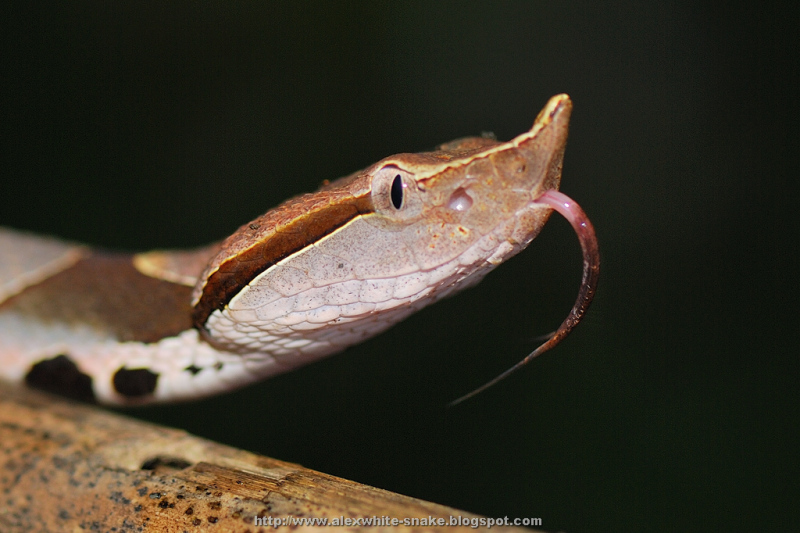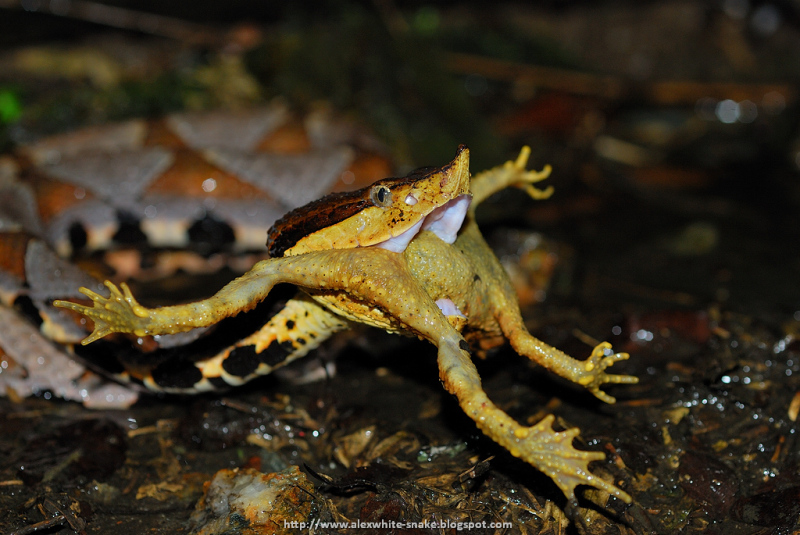Distinguishing features
The back is light brown or greyish brown, with a series of dark brown lateral triangles on each side. The two pointed tops of the two opposite triangles meet each other at the mid-line, forming a series of about twenty light brown, squarish blotches on the back. A row of large black spots extends along each side near the belly. The top and upper sides of the head are uniformly black, with a black streak from the eye to the angle of the mouth; yellowish below, spotted with dark brown. The young are much lighter than the adults with essentially the same pattern. The head is large, triangular, with an upturned snout. The body is very stout. The tail is short, ending in a compressed, pointed slightly curved cornified scale. The top of the head is covered with nine large shields. Dorsal scales are strongly and tubercularly keeled. The subcaudals are mostly in pairs, some of the anterior ones are single. (Wikipedia)
Size
- Up to 157 cm (Length of specimen) - applies to Males
- Up to 141 cm (Length of specimen) - applies to Females
Synonyms
Distribution and habitat preferences
It is found in southern China (Zhejiang, Fujian, Hunan, Hubei, Guangdong), Taiwan, northern Vietnam, and possibly Laos.
It inhabits high, forested mountains up to 1,350 metres, but has also been found in low coastal regions (100 metres). It prefers lower mountain slopes or rocky hills with small valleys. It is generally discovered by day on rocks or among vegetation along banks of streams, or in firewood near houses, or even in houses. (Wikipedia)
Chronotypes
Diet
The diet of this species consists of small mammals such as rats and mice, birds, toads, frogs and lizards. (Wikipedia)
Web resources
Danger
- often fatal - It often appears sluggish but the strike is typically very vigorous. The venomous bite of this species is considered dangerous, and fatalities are not unusual. An antivenom is produced in Taiwan. According to the US Armed Forces Pest Managent Board, the venom is a potent hemotoxin that is strongly hemorrhagic. Bite symptoms include severe local pain and bleeding that may begin almost immediately. This is followed by considerable swelling, blistering, necrosis, and ulceration. Systemic symptoms, which often include heart palpitations, may occur suddenly and relatively soon after the bite. Because of its body size and large hinged fangs which permit effective delivery of large quantities of venom, victims bitten by this snake should be treated accordingly. (Wikipedia)


